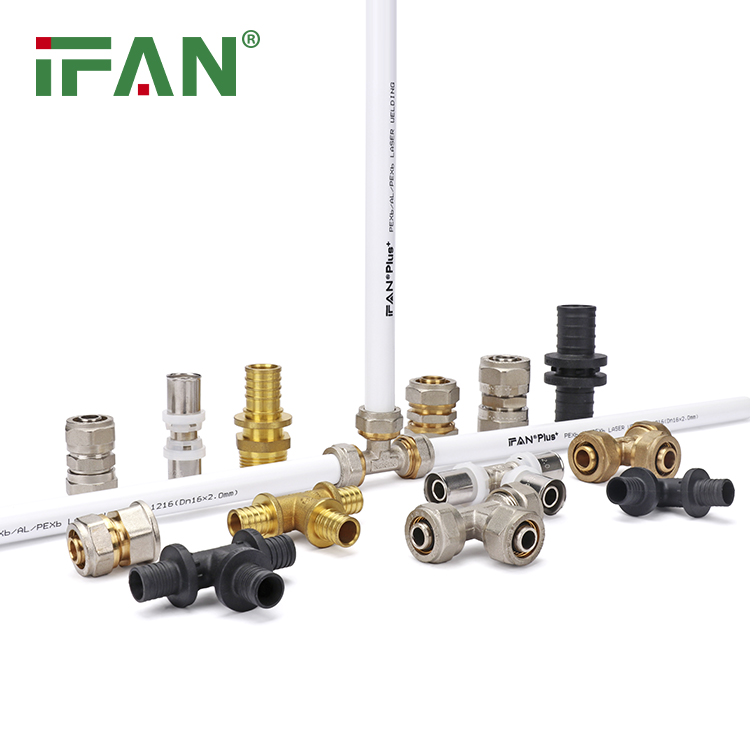Are copper press fittings better than PEX?
Copper Press vs PEX Fittings: Which Option Wins?
Examining Differences in Performance & Purpose
Introduction to Press Fittings
DUNYUN Press technology for pipe joining utilizes precisely machined fittings with encapsulated o-ring seals inside. Punching the pipe into the fitting compresses these o-rings against the wall to create an instant watertight seal without requiring soldering torches or chemical glues. Press fittings come in copper alloy, stainless steel, or engineered polymer materials depending on the tubing type. Their simplicity and reliability benefit both do-it-yourselfers and professionals.DUNYUN Press technology for pipe joining utilizes precisely machined fittings with encapsulated o-ring seals inside. Punching the pipe into the fitting compresses these o-rings against the wall to create an instant watertight seal without requiring soldering torches or chemical glues. Press fittings come in copper alloy, stainless steel, or engineered polymer materials depending on the tubing type. Their simplicity and reliability benefit both do-it-yourselfers and professionals.
PEX vs Copper Properties Refresher PEX refers to flexible tubing made from durable crosslinked polyethylene well-suited for water distribution. Copper remains the longtime standard pipe for plumbing and hydronic systems. Comparing key traits helps match each material’s advantages to the right applications. Beyond joining differences, physical properties drive ideal usages.
IFAN factory with 30+ years of manufacturing experience supports color/size customization and free samples. Welcome to consult for catalog and free samples. This is our Facebook Website: www.facebook.com.

Press Fitting Functionality
Press fittings bite down on inserted pipe walls using internal teeth or o-rings made to seal against matching surfaces. Using the right press fitting design for the corresponding pipe proves critical. Mismatched material pairings often fail from leaks or blowouts when tested. Interface compatibility determines reliability.
Sealing Theory
All effective press-fitting connections involve compressing a precisely contoured gasket seal within the socket cavity around the piping exterior when inserted fully. Permanent joints result from extremely tight dimensional tolerances between components under pressure. Correct material pairings remain vital for enduring functionality.
Copper Press Fitting
s Copper press fittings come in two common types. One style features an encapsulated o-ring gland while the other adds a memory retention ring that bites into the tubing. Both create strong, resilient, water-tight seals capable of handling years of thermal cycling and water hammer stresses. The system suits copper pipes exclusively.
PEX-Specific Press Fittings
PEX press fittings utilize advanced thermoplastics often reinforced with brass inserts. They incorporate opposing tooth-lined seal cavities designed to compress onto matching PEX tubing walls with extensive grip contact area. This achieves superior pressures and temperature capacities for hot and cold potable water use.
Performance Considerations
Beyond inherent material traits, the means of joining piping into circuits – such as with fittings – impacts the system’s capacities and service potential over decades.
Application Longevity
Carefully engineered fitting systems mean specific tubing counter compatibility hurdles between metals and plastics. Matching project needs to pipe capabilities allows ideal performance. Copper best suits high-pressure steam lines; PEX handles recycled rainwater feeds.
Pressure & Temperature Ratings
Look for certified pressure scores accounting for surges, elevation gains, pump ranges, and relief settings. Similarly, peak service temperatures cannot exceed pipe and fitting survivability specs before deformations risk joint leaks.
Compression/Seal Reliability
Precision machining and calibrated pressing tools ensure uniform sealing compression for leakage protection. Copper and PEX each demand fitting types designed exclusively for their distinct material properties to maintain grip integrity long-term.
Environmental Resistance
Compare fluid tolerances with system exposure risks like oxidation, chemical corrosion, mineral fouling, microbe infiltration, and UV breakdown over decades before specifying materials.
Repairability
Some proprietary press fitting systems disclaimer destructive disassembly while others allow qualified operators to cut apart, assess, and even salvage segments using precision techniques for non-welded pipes.
Inspection Accessibility
Press fittings commonly get embedded inside walls, floor slabs, and narrow pipe chases hindering external leak assessments. Certain designs feature built-in inspection ports or accommodate tiny camera probes for seeing inside assemblies while intact.
Cost Comparison
Factoring material price per foot or pound makes only one data point. Installation labor, tooling needs, lifespan estimations, and failure replacement difficulties ultimately drive cost justifications. Carefully analyze total expenditure estimates.
Performance Advantages by Type
In applications well-suited for each material’s characteristics and press fitting specifications, key advantages emerge:
Copper Press
- Decades of proven performance
- Max pressures nearing 4,000
- Code approval back to the 1940s
PEX Press
- Temperature swing resilience
- Corrosion and scale resistance
- Quick, simple, affordable connections
Example Application Guidance
Copper Press Fitting Systems Best Suit:
- Commercial hot water boilers
- Chilled water loop risers
- High-rise residential supply mains
PEX Press Fitting Systems Best Suit:
- Radiant floor heat manifolds
- Recirculating hot water lines
- Rural water transfer piping
Conclusion In summary, copper and PEX tubing each carry press fitting options engineered specifically around their distinct material properties. Properly matched connections avoid leakage risks and achieve max pressure/temperature capabilities meeting various commercial and residential application needs. Consider all specifications, conversion labor, lifespan, and hazards when determining if copper press or PEX press fittings prove better for your next project.
IFAN
IFAN factory started in 1993. And IFAN has a workshop of 120000 square meters with 610 staff. IFAN can design and produce all plumbing pipe and fitting including PPR, PVC, CPVC PPSU HDPE PEXA PEXB PERT pipe and fitting, brass fitting, brass ball valve, heating system, gas system, sanitary faucets, and hose, In the past 30 years, IFAN has never forgotten his mission-To protect health and safety. And IFAN factory uses the best materials to produce high-quality pipe and fittings with an automatic production line and high-tech quality control machines.

